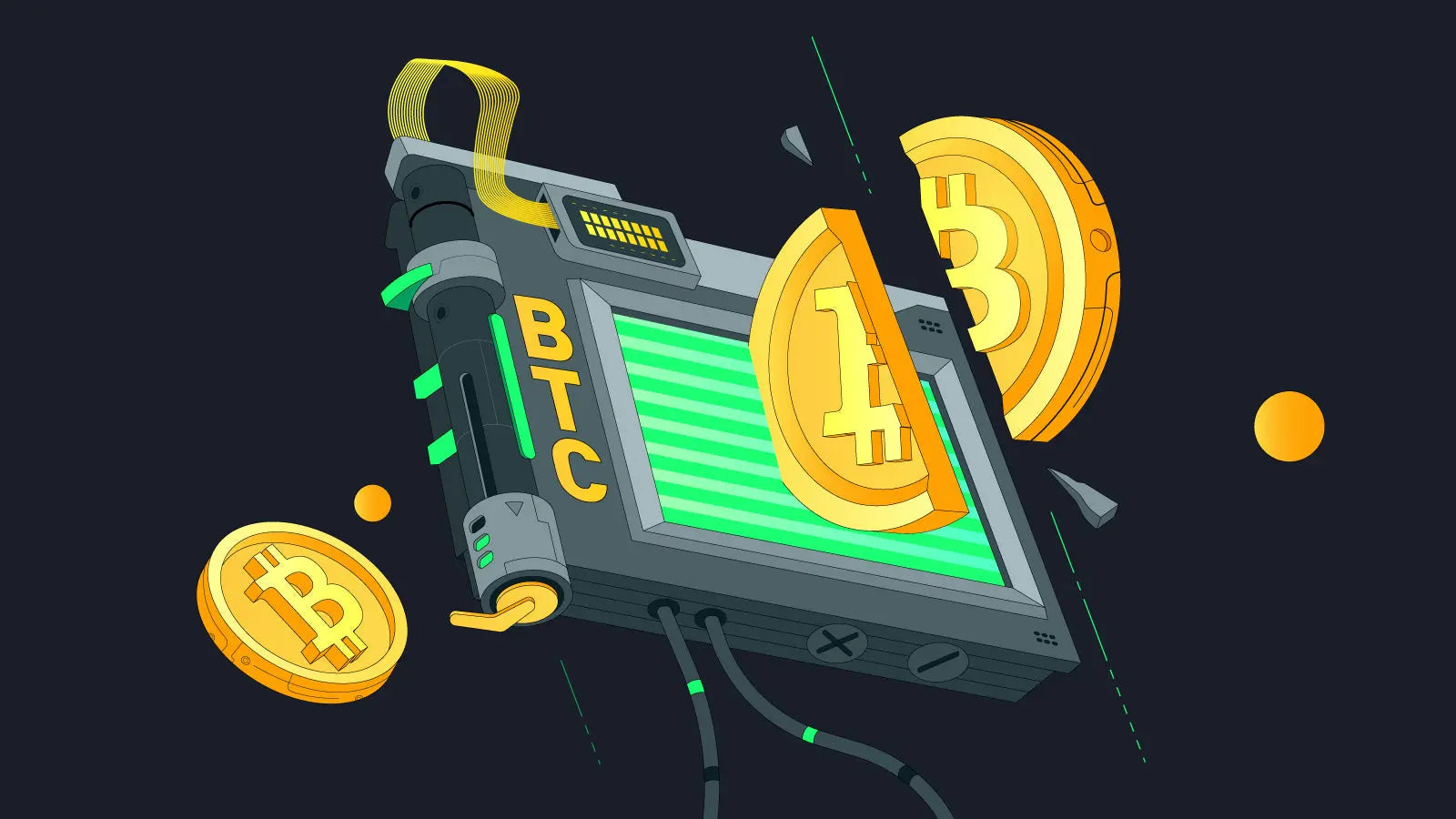As April 18, 2024 approaches, the cryptocurrency world is preparing for one of the most significant events in the Bitcoin lifecycle – the halving . Scheduled for the 840,000th block, this biannual phenomenon will reduce the reward for mining a block from 6.25 to 3.125 bitcoins. This mechanism, written into Bitcoin's code since its creation, is analogous to the extraction of precious metals, where access to new resources becomes progressively more difficult and expensive, thus directly influencing their value on the market.
Fundamental principle of Halving, what is HALVING?
Bitcoin halving is an automatic mechanism built into the Bitcoin blockchain protocol that directly impacts the speed at which new bitcoins are generated and introduced into the system. This mechanism is crucial to understanding how Bitcoin simulates scarcity and controls digital inflation through a predefined algorithmic approach.
The concept of halving was established by Satoshi Nakamoto , the anonymous creator of Bitcoin. It is outlined in the original Bitcoin white paper and was designed to ensure that the digital currency does not experience excessive inflation, while creating a form of scarcity similar to that of finite resources like gold.
Technical operation
The halving occurs every 210,000 blocks mined, which is approximately four years, given the average mining time of a block, set at around 10 minutes. Each time this block threshold is reached, the reward granted to miners for each new validated block is reduced by half.
Initially, the block reward was 50 BTC. After the first halving in 2012, it increased to 25 BTC. The second halving in 2016 reduced the reward to 12.5 BTC, and the third in 2020 lowered it further to 6.25 BTC. The next halving, scheduled for 2024, will reduce this reward to 3.125 BTC per block.
Economic Objectives of Halving
1. Inflation Control: By regularly reducing the reward for mining new blocks, Bitcoin simulates a form of scarcity that prevents the currency from devaluing. As the supply of new bitcoins decreases, assuming demand remains constant or increases, the price should theoretically increase.
2. Simulate Resource Scarcity: Like natural resources becoming more difficult and expensive to extract over time, Bitcoin also becomes more difficult to “mine”. This process is designed to reflect the diminishing supply of new bitcoins, thereby increasing its appeal as a store of value.
3. Economic Predictability: The halving is a predictable event, written into the Bitcoin code. This predictability helps stabilize the expectations of investors, miners, and users, providing a clear roadmap for how Bitcoin's supply will evolve over time.
Impact on Miners and the Bitcoin Economy
Halving substantially affects Bitcoin miners, effectively doubling the cost of producing each bitcoin. Currently, this community receives 6.25 bitcoins per validated block, but this reward will be reduced to 3.125 bitcoins post-halving. Although transaction fees can offset some of the loss, the volatility of this revenue adds a layer of uncertainty for miners, particularly those with small scale or high energy costs.
This change will also have a direct impact on the selling pressure exerted by miners in the market. Traditionally, to cover operational costs, miners sell a significant portion of newly mined bitcoins. With the reduction in rewards, if prices do not at least double, many miners could find themselves in financial difficulty, which could lead to a reduction in selling pressure or, ironically, an increase if miners sell their reserves to survive .
Market Outlook: Speculation and Reality
Historically, halvings have preceded periods of significant rise in Bitcoin prices. Data shows that prices tend to increase in the months following a halving, due to the reduced supply of new bitcoins and positive investor anticipation. For example, after the halving of 2020, the price of Bitcoin rose dramatically, reaching all-time highs.
However, it is crucial to note that every halving cycle is different, and market dynamics that influenced previous halvings may not necessarily repeat themselves. The growing integration of Bitcoin-related financial products, such as ETFs, could also play a moderating role by stabilizing the price or amplifying the effects of halving.
The Long-Term Impact of Halving on Bitcoin Supply
By reducing the block reward, halving ensures that the total supply of bitcoins will never exceed 21 million units. As of today, approximately 19.65 million bitcoins are in circulation, representing over 93% of the total planned supply. This fixed and predictable pattern is what makes Bitcoin particularly attractive to those seeking an alternative to fiat currencies, which are prone to inflation under the influence of central bank monetary policy.



Share: